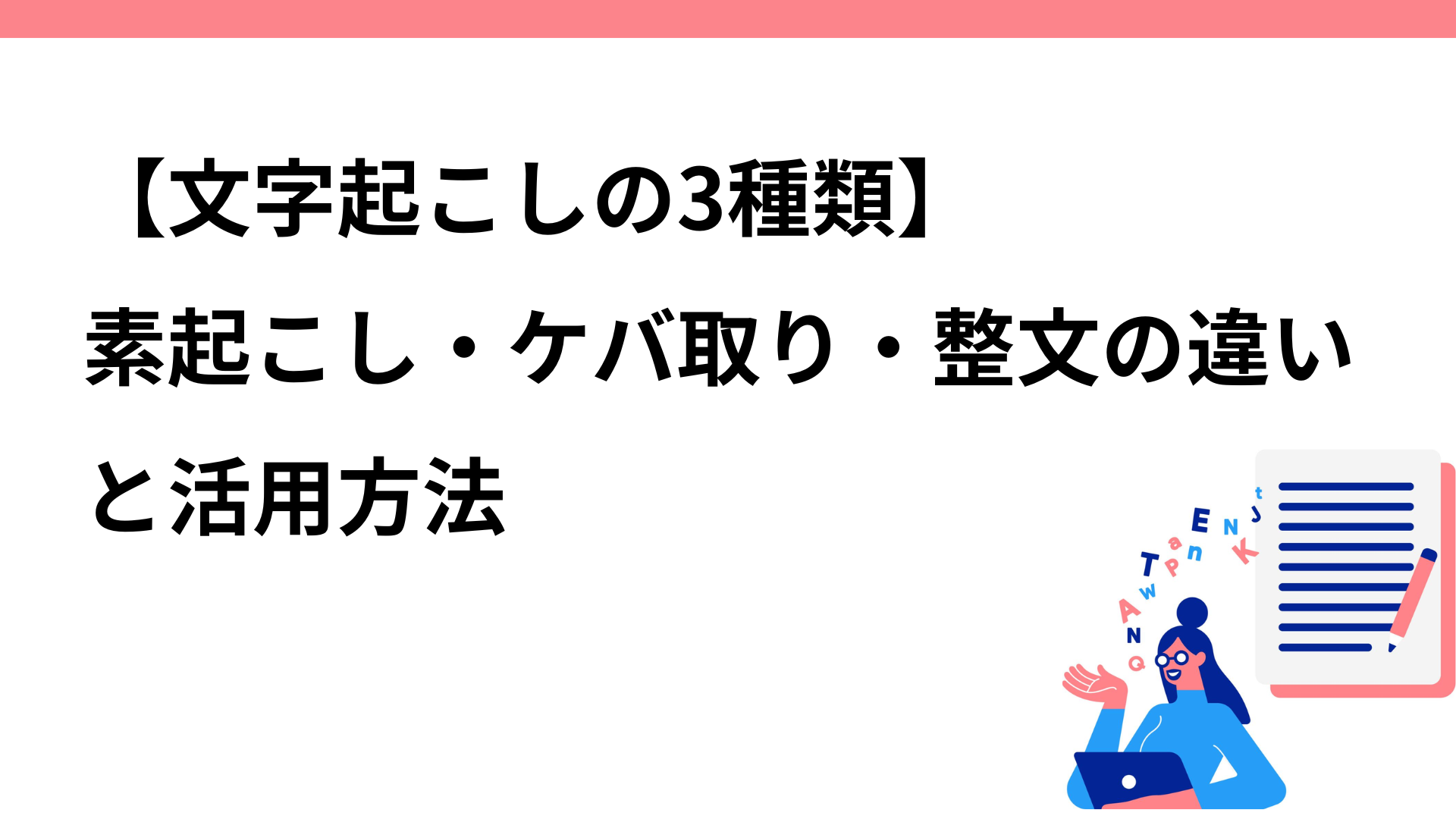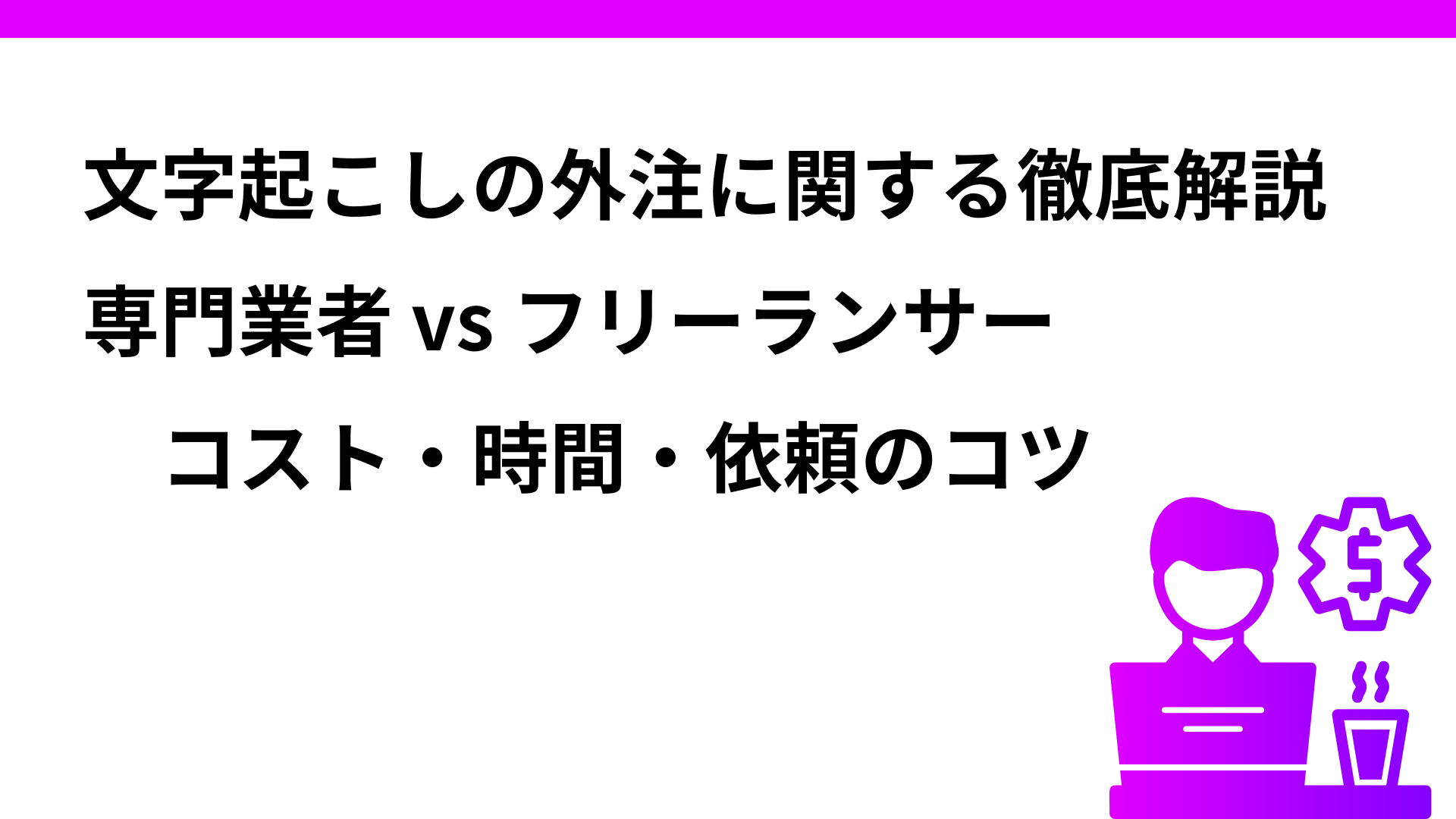Introduction.
Transcription is the process of converting speech or audio into text, and can range from accurate recording to generating easy-to-read documents. Interview AI can transcribe an hour’s worth of audio in as little as 15 seconds, followed by automatic “kebabing” and “sentence alignment. This article explains the differences between each method with specific examples and introduces the benefits of automation through the use of AI.
Transcription: Transcribe accurately word for word
Transcription is a method of accurately transcribing audio content word for word. It is often used in meetings and interviews where a complete transcript is required.
Examples of Application
- counseling
- Legal records: high evidentiary requirements
- interview (i.e. television, newspaper, etc.)
- Data analysis in market research, etc.
Sample of wake-up call
Interviewer: “Well, the first project didn’t work out, um, what was the reason for that?”
Respondent: “Oh, well, …… well, um, it was because some of the estimates were, um, wrong.”
Interviewer: “Yeah, well, how did you handle it after that?”
Respondent: “Well, we immediately, uh, recalculated and corrected them as a team.”
In this way, all of the verbal habits and pauses are also written down.
Keba-ripping: Transcription by cutting off unnecessary parts in the audio
Keba-tori is a method of making sentences easier to read by removing unnecessary parts of speech (e.g., habitual or ambiguous expressions such as “er,” “uh,” “well,” etc.). It is used when the essence of the content is not changed, but a concise summary is desired.
When you are speaking, it does not bother you much, but when you transcribe the text, you may find it difficult to read the text because of the kerf. In such cases, we can remove the kerf.
The word “keba” is derived from “wisps” formed when wood or plastic is processed, and “kebashiri” means to remove unnecessary parts such as “ee” and “um”, which are “wisps” in words, to make sentences smoother. Kebadori means to make a sentence smooth by removing unnecessary parts such as “ee” and “um”, which are “wisps” of words.
Examples of Application
- Drafting of interview articles
- Minutes of the meeting
- Web Content
- class
- Roundtable Discussions
- In-house newsletters and public relations materials
Sample of scuff removal
INTERVIEWER: “What was the reason your first project didn’t work out?”
Respondent: “It was because some of the estimates were incorrect.”
Interviewer: “What did you do after that?”
Respondent: “Our team immediately recalculated and corrected them.”
Cutting out the redundancies will help the main topic come across smoothly.
Arranging sentences: organizing the main points of a sentence
Rearrangement is the process of further editing the text after the kebab removal and arranging it into a formal sentence or sentence structure.
The Keba-Tori is written without correcting any redundancies, so even though unnecessary words have been removed, it is still not easy to read.
In a well-formed document, the endings and word order are adjusted to complete the written language. It is used in news articles, official reports, and other situations where professional documentation is required.
Examples of Application
- Interviews for the media
- Presentations and official documents
Sample Integer Sentences
INTERVIEWER: “What caused your first project to fail?”
Respondent: “We discovered an error in our estimate, and that became a problem.”
Interviewee: “How did you deal with it afterwards?”
Respondent: “The entire team recalculated and quickly corrected it.”
In the formatting process, the style and tone of the text is set to make it official.
Cost and time for manual transcription
Now that we have looked at the three types of transcription, let’s look at how much time and money each of these types of transcription would cost if done manually.
Basically, the order of unit price is “text preparation”, “transcription”, and “kebadori”. The unit price of transcription tends to be higher than that of kebadori, because filler words and ambiguous parts must be transcribed accurately.
Transcription: 6,000-10,000 yen/hour
- Work time: 1 hour of audio = 3-5 hours of work
- Outsourcing cost: 6,000-10,000 yen (per hour)
- Characteristics: Accurate, but time-consuming and costly.
Scratch removal: 4,000-8,000 yen/hour
- Work time: 2 to 3 hours (editing the transcribed text)
- Outsourcing fee: 4,000-8,000 yen (per hour)
- Characteristics: Organizes the main points, but requires time and effort to maintain.
Sentences: 5,000-12,000 yen/hour
- Working time: 2 to 3 hours (final finishing)
- Outsourcing fee: 5,000-12,000 yen (per hour)
Click here for an article on “In-depth explanation of outsourced transcription|Specialized companies vs. freelancers|Cost, time, and tips for making a request”.
Benefits of Automated Transcription with Interview AI
Interview AI can transcribe an hour-long audio file in as little as 15 seconds, after which the AI will also automatically “debase” and “rearrange” the text. This provides the following benefits
- Speed: AI handles the process automatically, significantly reducing manual time.
- Accuracy: Keba-ripping and sentence alignment are also done automatically, and only human checks are required for perfection.
- Flexibility: Combination of drafting, scuffing, and text preparation can be used depending on the application.

If you are doing transcription manually and are worried about time and cost, please consider an AI transcription tool such as Interview AI.
summary
There are three types of transcription processes: “transcription,” “filtering,” and “editing,” each of which must be used according to the purpose of the transcription. Interview AI performs these processes automatically, reducing the workload, so you can take advantage of the power of AI to achieve quick, high-quality transcription and improve the efficiency of your business.


